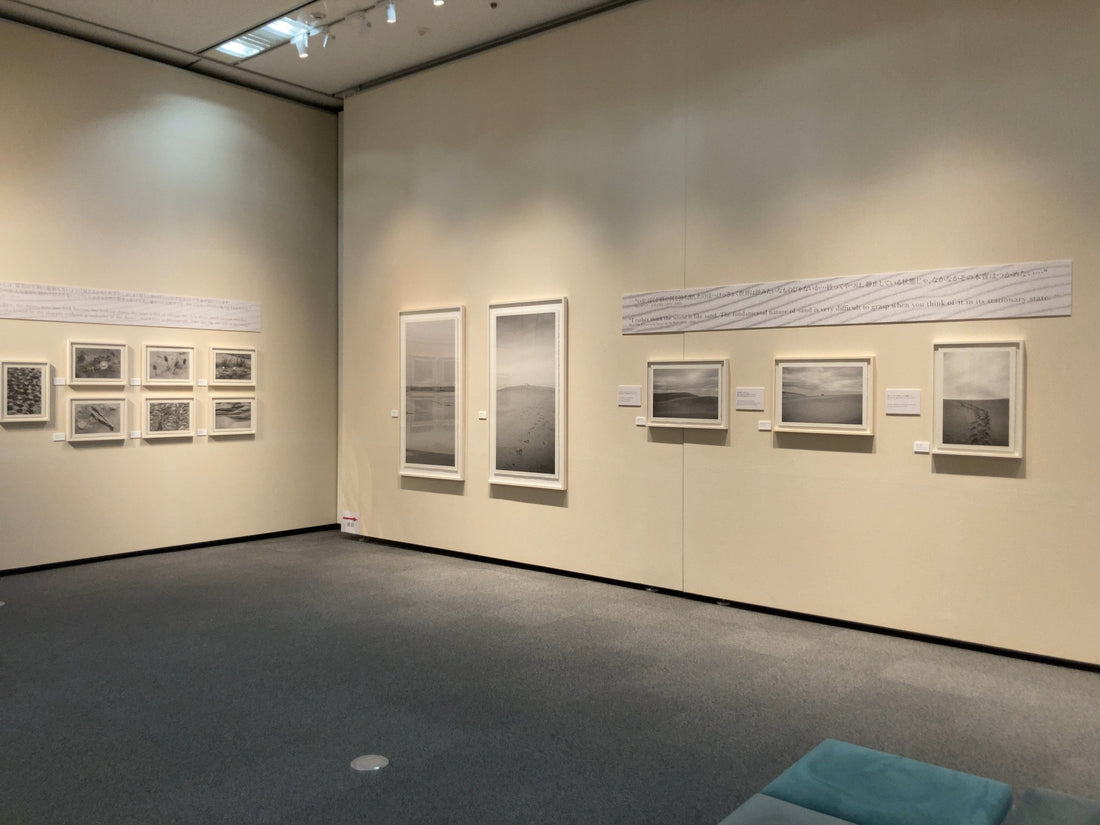Landscapes on Inshu Washi — The Beauty of Tottori Captured by Günter Zorn
Currently on view at the Tottori City History Museum, Günter Zorn Photo Exhibition: "Fūmon – Shifting Landscapes" quietly but profoundly sheds light on the true essence of the Tottori Sand Dunes—something familiar, yet not fully known.
German photographer Günter Zorn first learned about the Tottori Sand Dunes in the 1980s. The trigger was The Woman in the Dunes, a seminal novel by Kobo Abe. Drawn to the story of a man trapped in an endless sea of sand, Zorn was captivated to learn that such a place existed in real life. It became etched in his heart as somewhere he must one day visit.
His determination was further solidified when he encountered the works of Shoji Ueda, a renowned photographer from Tottori.
Zorn finally visited the Tottori Sand Dunes in March 2020. Amid the global pandemic, the dunes were almost deserted, with only the sound of wind and sand filling the vast landscape. Climbing steep slopes, crossing deep valleys, and feeling the sea breeze on his skin, he continued to press the shutter.
What he sought to capture was the “shape of time” inherent in the untouched dunes. The resulting images, printed on traditional Inshu washi paper, resonate with a quiet poetry—timeless, serene, and deeply evocative.


All the photographs were taken in black and white.
Color was unnecessary to evoke the ruggedness, solitude, and serene beauty of the dunes.
Countless wind patterns, footprints erased by the wind, and occasional traces of living creatures—
Confronted with these, Mr. Zorn said he was touched by the profound nature of the dunes and the abstract poetic quality inherent in nature.


The approximately 40 works on display this time are all printed on Inshu washi paper from Tottori.
The handcrafted paper’s distinctive three-dimensional texture and delicate gradations of gray lend a unique warmth and depth to the depiction of the dunes.
The washi itself, as a natural material, embodies a respect for nature and a sense of sustainability—values that resonate deeply with Mr. Zorn’s philosophy.


This exhibition is a modest homage to two Japanese artists, Kōbō Abe and Shōji Ueda, and also a gesture of gratitude to those who cherish and protect the sand dunes.
To observe, document, and speak to the ever-changing landscape that is nature—
Such a sincere gaze quietly stirs the hearts of those who behold it.
The photo exhibition Wind Patterns: A Changing Landscape runs through Saturday, June 1.
Why not take the time to experience the quiet world woven by the dunes and photography?



